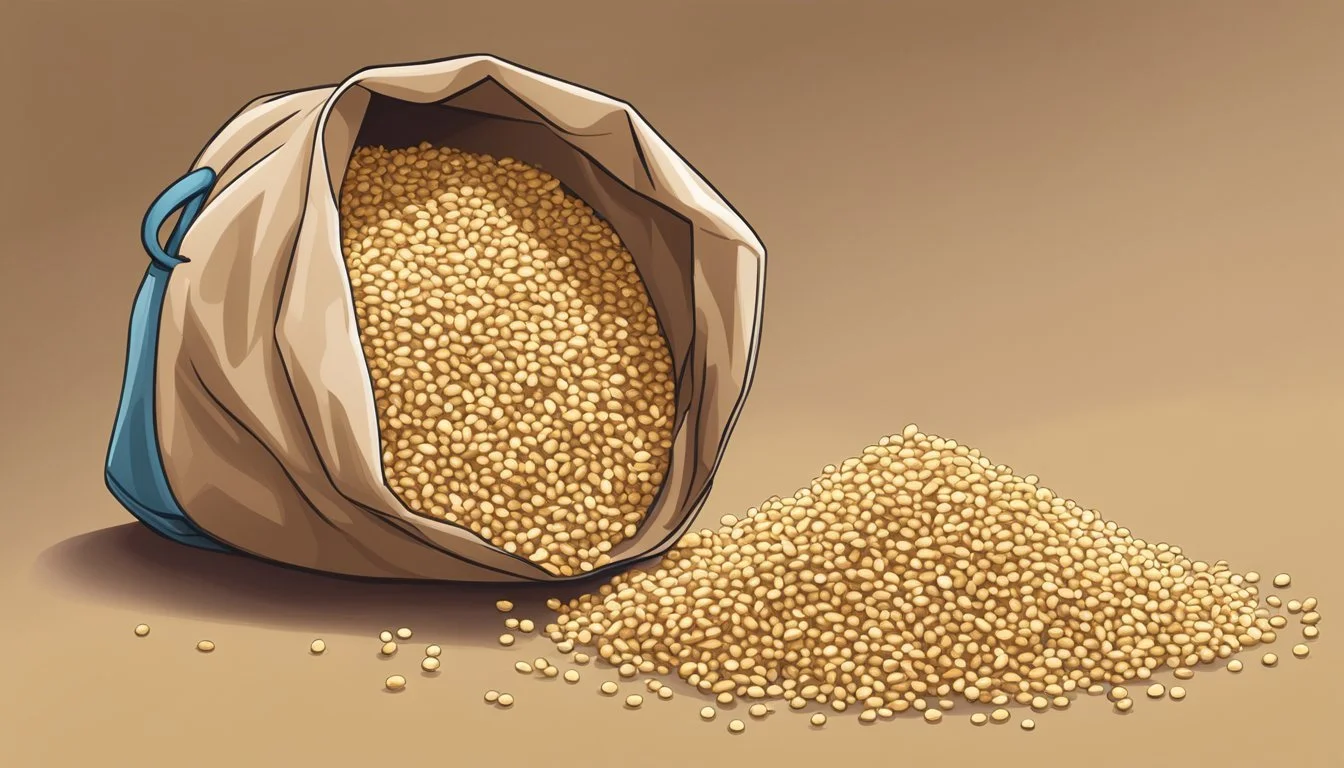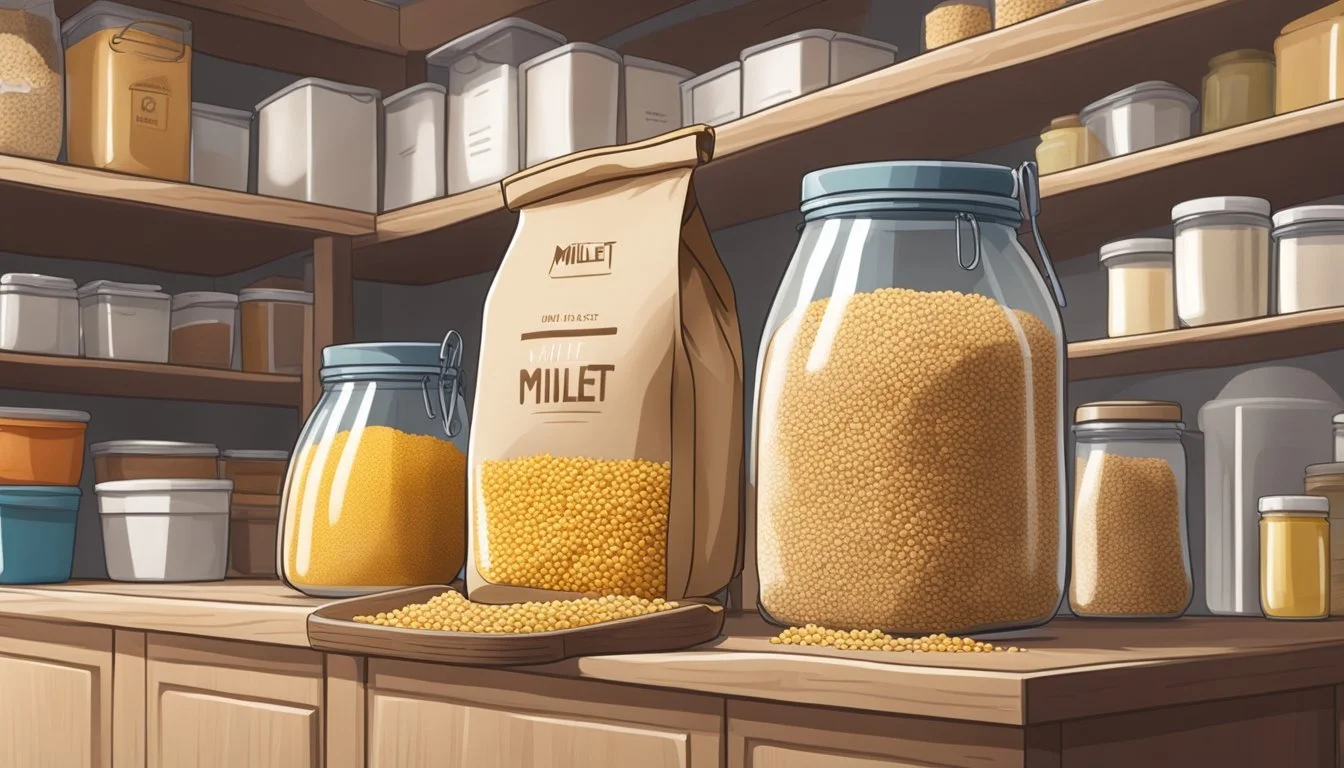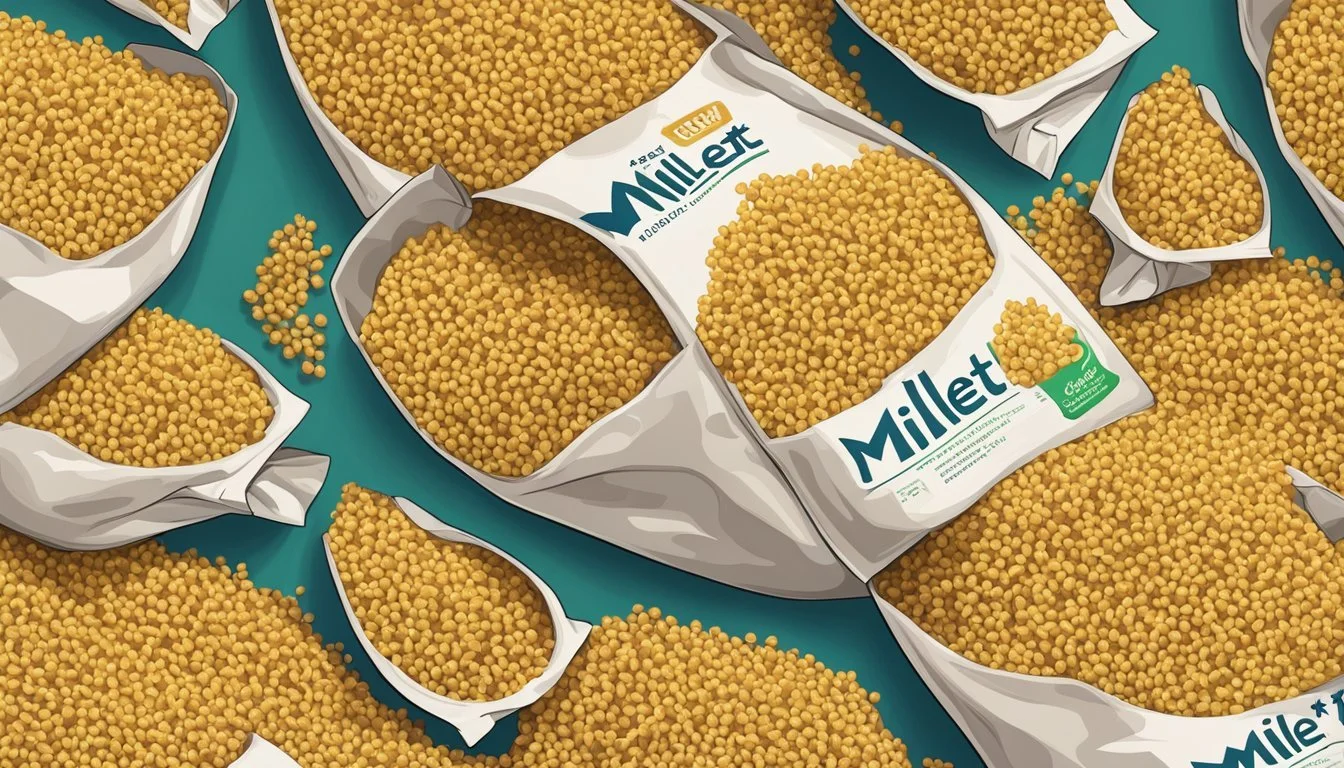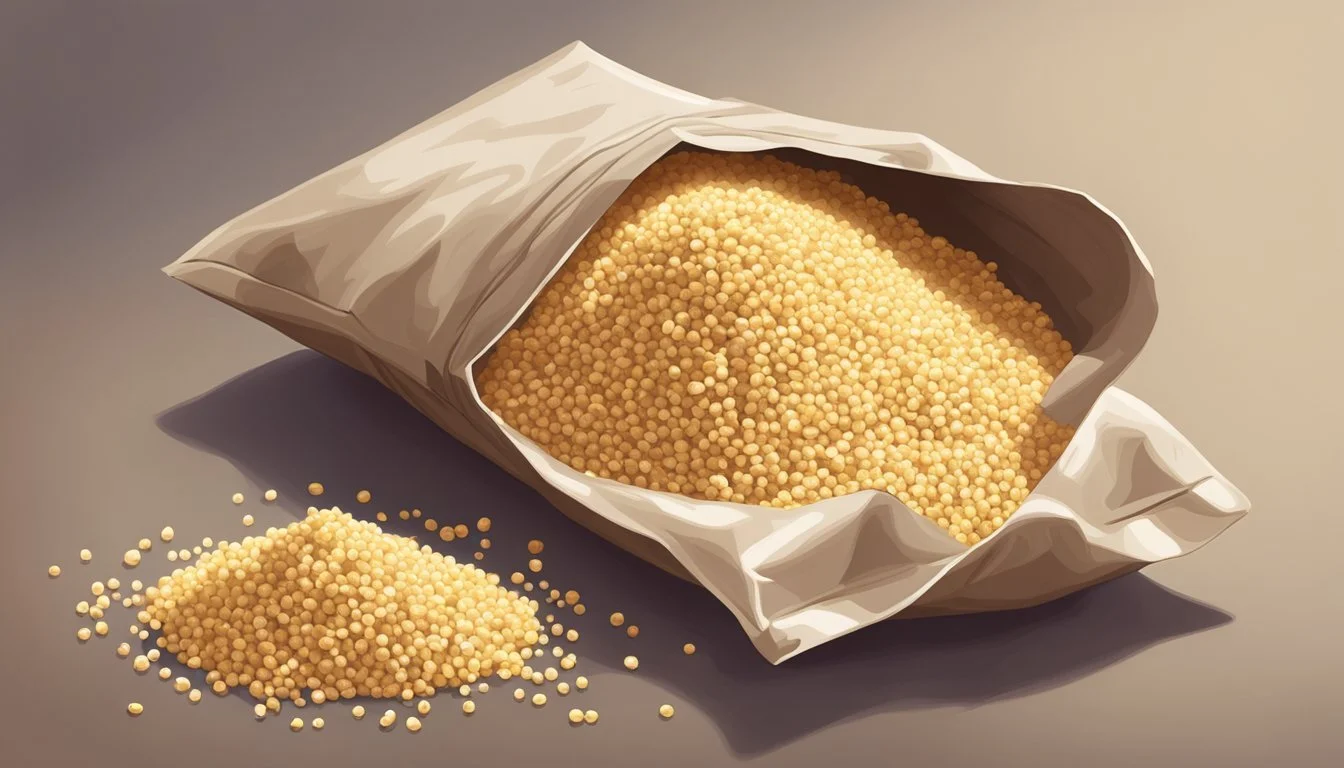Does Millet Go Bad?
Understanding Shelf Life and Spoilage Signs
Millet, a nutritious grain often found in birdseed, is also a staple in many parts of the world due to its high nutritional value and versatility. Like all grains, millet has a shelf life which can be impacted by various storage conditions. Properly stored millet can last up to two years, retaining its quality and nutritional content. It's essential to keep millet in an airtight container located in a cool, dry area away from direct sunlight or heat sources to maintain its shelf life.
Recognizing when millet has gone bad is crucial for health and taste reasons. Millet that has a change in color, texture, or odor may be a sign that it is no longer suitable for consumption. These changes can occur due to improper storage or simply because the millet has reached the end of its shelf life. It is not only about the waste of grains but also about ensuring what is consumed is safe and upholds its promised nutritional benefits.
To extend the longevity of millet and harness its valuable nutrients, some consumers may opt to store it in the refrigerator or freezer. Cold storage can further inhibit the growth of bacteria and pests, which can spoil the grain. Whether it's being incorporated into a warm, comforting porridge or a savory pilaf, ensuring millet is fresh and stored correctly is pivotal in making the most out of this ancient grain's healthy attributes.
Understanding Millet
Millet is an ancient, gluten-free, and nutritious grain that offers a wealth of versatility in cuisine. It caters to a range of dietary needs and is celebrated for both its health benefits and culinary uses.
Types of Millet
Millet encompasses several varieties, each with distinct characteristics and uses. The most widely cultivated types include:
Proso Millet: Commonly used in Western countries and known for its short growing season.
Pearl Millet: Prevalent in Africa and India, it's valued for its ability to thrive in harsh environments.
Finger Millet: Highly favored for its nutritional properties, especially in African and Asian countries.
Each variety of millet brings its own unique flavor and texture to different dishes, from fluffy porridge to hearty salads.
Nutritional Profile
The nutritional profile of millet is impressive, making it a beneficial addition to any diet. Millet is rich in nutrients, boasting a high content of:
Protein: Essential for muscle growth and repair.
Fiber: Important for digestive health.
Vitamins: Such as B-vitamins, which are vital for energy metabolism.
Minerals: Including magnesium, phosphorus, and iron.
Antioxidants: Which help combat oxidative stress.
Millet's high nutrient density supports overall health and can be particularly beneficial for those following a gluten-free diet.
Millet in Cuisine
Millet's culinary uses are abundant. Its ability to absorb flavors makes it suitable for savory and sweet dishes. It can be used in various forms of cooking, such as:
Porridge: Often served for breakfast, similar to oatmeal.
Salad: Millet grains add texture and nutrients to salads.
Soups: It can serve as a thickening agent or as an ingredient for added substance.
Baked Goods: Millet flour is a gluten-free option for baking bread, muffins, and other treats.
This versatile grain adapts well to a plethora of recipes, making it a staple in kitchens around the globe.
Identifying Spoiled Millet
Recognizing spoiled millet is essential for food safety. Certain visual, olfactory, and textural changes indicate millet has gone bad and should not be consumed.
Changes in Appearance
Millet that is no longer fit for consumption may exhibit noticeable discoloration, turning from its natural pale yellow hue to a dull gray or brown. Signs of mold growth are a definitive indication that millet has spoiled. These changes suggest the presence of microorganisms that can lead to foodborne illnesses.
Alterations in Smell and Taste
Fresh millet should have a slightly nutty and inoffensive aroma. When millet has spoiled, it can emit an unpleasant odor that is often rancid or sour. If the grain has taken on a bitter flavor, this is another clear sign that the millet is no longer safe to eat.
Texture Variations
Millet's natural state is relatively dry and fluffy when cooked properly. Spoiled millet can turn stale, become excessively dry, or, if exposed to moisture, may become clumpy or slimy. Any deviation from its typical texture could be an indicator that the millet has gone bad.
Storage Solutions
Proper storage of millet is essential in maintaining its freshness and extending its shelf life. The following subsections detail the specific conditions and container options that are ideal for storage, as well as techniques for freezing millet.
Ideal Storage Conditions
The longevity of millet is closely tied to the storage environment. Temperature and humidity are critical factors; millet should be stored in a cool, dry place such as a pantry or cupboard. The optimal temperature range to prevent spoilage is generally lower than room temperature, with 70°F (21°C) or cooler being ideal. Minimizing exposure to moisture is crucial, as increased humidity can lead to mold growth and spoilage.
Container Options
The choice of storage container significantly affects millet's shelf life. Airtight containers are paramount in maintaining millet's quality. Glass jars or food-grade plastic containers with tight-fitting lids are excellent choices to protect against moisture and air penetration. Storing millet in an airtight environment helps preserve its nutritional value and prevents infestations of pantry pests.
Freezing Millet
For long-term preservation, freezing is an effective method. To freeze millet, one should:
Ensure that the millet is completely dry before storage.
Use airtight containers or freezer bags to prevent freezer burn and moisture accumulation.
Label the containers with the date of storage to keep track of shelf life.
Frozen millet can be kept in the freezer for an extended period, typically well beyond its pantry shelf life. When stored at a consistent 0°F (-18°C) temperature, millet's freshness and quality are retained for future use.
Preventing Millet Spoilage
Ensuring millet remains fresh and safe to consume involves adopting effective storage practices and handling it in a way that minimizes exposure to common spoilage factors such as light, oxygen, and moisture.
Proper Handling Techniques
When dealing with millet, one should always ensure that their hands and all surfaces are clean to prevent the introduction of contaminants. Before storing millet, whether it's whole grain or flour, one should transfer it to an airtight container. This not only helps in preserving freshness but also protects it from oxygen exposure which can accelerate spoilage.
Storage containers: Use glass or food-grade plastic containers with tight-sealing lids.
Environment: Store the container in a cool, dark place such as a pantry or cupboard, away from any heat sources.
Food Safety Practices
Food safety is paramount to prevent food poisoning and maintain the quality of millet:
Visual Inspection: Regularly check for signs of mold or fungi, and discard any millet that shows these spoilage indicators.
Smell: Trust the nose; if millet emits a foul or musty odor, this is a reliable signal that it should not be consumed.
Temperature Control: Keep millet away from fluctuating temperatures which can encourage the growth of bacteria.
Light and Moisture: Limit millet's exposure to light and moisture, both of which can degrade the grain's quality and lead to the growth of harmful pathogens.
By following these focused tips on handling and food safety, one can extend the shelf-life of millet and ensure that it remains a nutritious and safe part of their diet.
Shelf Life Considerations
When considering the shelf life of millet, one must distinguish between its uncooked and cooked forms. The expiration date serves as a guideline for optimal quality assurance.
Uncooked vs Cooked Millet
Uncooked Millet: If stored correctly—in a cool, dry, and dark place—uncooked millet can maintain its freshness for up to two years. This is due to its stable nature as a whole grain which is less prone to spoilage compared to its cooked counterpart.
Storage conditions for Uncooked Millet:
Temperature: Below 70°F (21°C)
Container: Airtight
Environment: Cool, dry, and dark
Cooked Millet: Once cooked, millet's longevity reduces significantly. Cooked millet should be stored in the refrigerator where it will stay good for about one week. It should always be placed in an airtight container to maintain freshness and prevent contamination.
Storage conditions for Cooked Millet:
Temperature: 40°F (4°C) or below (refrigerator temperature)
Container: Airtight
Environment: Cold and dark (refrigerator)
Significance of Expiration Dates
Expiration dates on millet packaging are reflective of the grain's peak quality period. While millet may not necessarily become harmful after this date, it can begin to deteriorate in flavor, texture, and nutritional value. The expiration date is pivotal for consumers to gauge the overall quality and optimal consumption periods of millet, especially when stored under recommended conditions.
Common Questions About Millet
When considering millet as a dietary option, consumers frequently have a range of questions regarding its safety, role in diets, and how it compares to other grains.
Safe Consumption
Is millet safe to eat? Yes, millet is generally safe to consume. To ensure its safety, one should check for signs of spoilage such as mold, unpleasant odors, or a significant change in color or texture. Fresh millet typically has a pale yellow color and a subtle, nutty flavor. If one detects a musty or sour smell or observes discoloration, the millet should not be consumed as it may cause food poisoning.
Usage in Diets
Can millet be included in gluten-free diets? Millet is naturally gluten-free, making it a suitable grain for those with gluten intolerance or celiac disease. This grain is versatile and can be used in place of wheat in many recipes, enhancing meals with its mild, nutty flavor. However, one should ensure that it is processed in a gluten-free facility to prevent cross-contamination.
Comparison with Other Grains
How does millet compare to oats, quinoa, and wheat?
Grain Gluten Content Flavor Profile Nutritional Comparison Millet Gluten-free Nutty Higher in phosphorus and magnesium compared to wheat. Oats Often gluten-free; check for cross-contamination Mild, creamy Typically higher in fiber, may contain beta-glucans that help with cholesterol management. Quinoa Gluten-free Earthy, nutty Complete protein with all essential amino acids, generally higher in fiber and protein than millet. Wheat Contains gluten Nutty, earthy In whole form, provides fiber; refined versions are less nutritious than millet.
Millet offers a valuable alternative for those avoiding gluten or seeking to diversify their grain consumption. It's not only a source of vitamins and minerals but also an excellent way to introduce variety into a balanced diet.
When to Discard Millet
Millet, like many other grains, is susceptible to spoilage under certain conditions. Consumers should discard millet if they observe any of the following signs:
Musty or Rancid Odor: Millet should possess a mild, nutty scent. A musty or rancid smell is an indication it has gone bad.
Change in Texture or Color: Fresh millet usually has a pale yellow color. Any significant deviation can imply spoilage. Millet flour, on the other hand, should be powdery and consistent. Clumping or condensation points to moisture problems which can lead to mold growth.
Mold or Fungal Growth: The presence of visible mold or fungal growth signifies that the millet is unfit for consumption and should be disposed of immediately.
Evidence of Pests: Infestation by insects or pests often results in spoilage. Any signs of insects in the packaging means the millet should not be consumed.
In terms of millet storage, the following practices are recommended to prolong its shelf life and minimize the risks of discarding it prematurely:
Store in an airtight container to prevent exposure to air which can lead to rancidity.
Place the container in a cool, dry location, away from heat sources to maintain its freshness.
Regularly inspect packaging for any signs of damage or exposure which could introduce contaminants or pests.
By staying vigilant and understanding these indicators of spoiled millet, one can ensure that their grain remains fresh and safe to consume.







